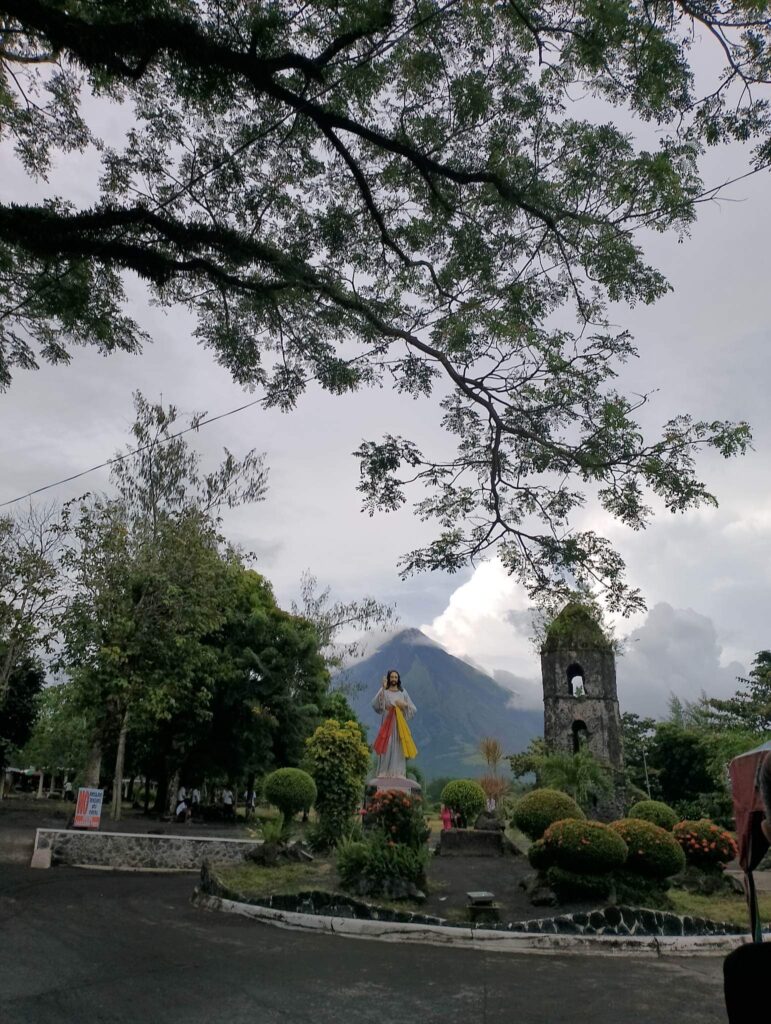Behind its majestic and mystical form, Mayon Volcano hides its long history of violent eruption. But today, let’s unwrap one of its most notable explosions – the 1814 eruption!
Exactly 209 years ago today, February 1, 1814, the most violent eruption episode of Mayon Volcano took place wrecking havoc, devastating nearby towns and killing 12,000 people in Albay.
In effect, the nearest pueblo, Cagsawa, despite its resistance and hesitation, has been integrated into the nearest municipality, Daraga.
Similarly, the almost perfect cone volcano demonstrated a Plinian blare, the most violent and largest eruption that destroyed the nearest church in lahar. That historical church is now called Cagsawa Ruins, a historical and tourist site in Albay.
To make sense of what happened during that sorrowful day, stated below are some historical texts that describes the horrifying eruption:
“On February 1, 1814, a fearful eruption occurred in the volcano Mayon, which partially or wholly destroyed many villages in Albay and Camarines; hot stones, sand, and ashes were poured forth from the crater, and villages were thus set on fire, and their inhabitants killed. The slain numbered 12,000, besides many more seriously injured; and those who escaped lost all their possessions. The most fertile and beautiful districts of Camarines were converted into a desert of sand.” (Blair & Robertson, The Philippine Islands 1493-1898, v.51, as cited in Ocampo, 2013 )
“Early in the morning of Tuesday, it was very quiet in Camarines. It was clear, with a clear horizon. However, I noticed that the hills closest to the volcano were covered by a fog which I thought to be smoke coming out of a house which might had (sic) been burned that night. At eight o´clock of that frightful morning, at which hour the volcano began suddenly to throw a thick column of stones, sand and ashes which very quickly went up the atmosphere, at the site of which we were very surprised, filled with the greatest dread, all the more when we noticed that it covered very quickly the fold of the volcano. We had never seen such an eruption. That is why we were persuaded that a great river of fire was flowing towards us and was about to bury us.” (Aragoneses, F.F. (2021). Suceso espantoso acaecido en la erupción del volcan de Albay en la isla de Luzon una de las llamadas Filipinas (Philippiniana Sacra). UST Publishing House. Original work published 1815), as cited in Saysay Bikol, 2023)
“About 10 o’clock the rain of large stones ceased, substituted by a rain of sand; and (by) 1:30 the noise somewhat diminished and the sky began clearing up. The ground was covered with cadavers and the seriously wounded; in the church of Budiao were 200 persons and in a house of that same town were 35 people. Five towns of Camarines were completely destroyed and the major part of the villa of Albay. Some 12,000 people died, very many were seriously wounded, and those who survived lost all their property. The volcano had a sad and horrendous aspect; its slopes previously so picturesque and cultivated, could be seen covered with sand; the blanket of rocks and sand had a thickness of from 10 to 12 yards. In the area where Budiao was located, the coconut trees were buried up to their crown…The most beautiful parts of Camarines, the most fertile regions of the province, had been converted into an arid desert of sand.” (F. Jagor, 1873, Reisen in den Philippinen, as cited in Ocampo 2013)
Mayon Volcano is endearing to the eyes of many. But lest we forget that behind its beauty lies its rich historical roots that are crucial to the foundation of contemporary Albay. I Arvie Bediones


Sources:
Saysay Bikol (2023, February 1). February 1, 1814 Mayon Eruption Below Below is an English translation of an excerpt from Fray Francisco Aragoneses, OFM’s “Suceso espantoso acaecido en la erupción del [Image attached] [Status update]. Retrieved from https://web.facebook.com/photo?fbid=489947923306735&set=a.394307712870757
S.J. Olan (2015, February 1). Looking back: Mayon volcano’s most destructive eruption. Rappler. Retrieved from https://www.rappler.com/moveph/82577-mayon-volcano-1814-eruption/
A. Ocampo (2013, May 7). The mayon eruption of 1814. Inquirer.net. Retrieved from
https://opinion.inquirer.net/52185/the-mayon-eruption-of-1814
